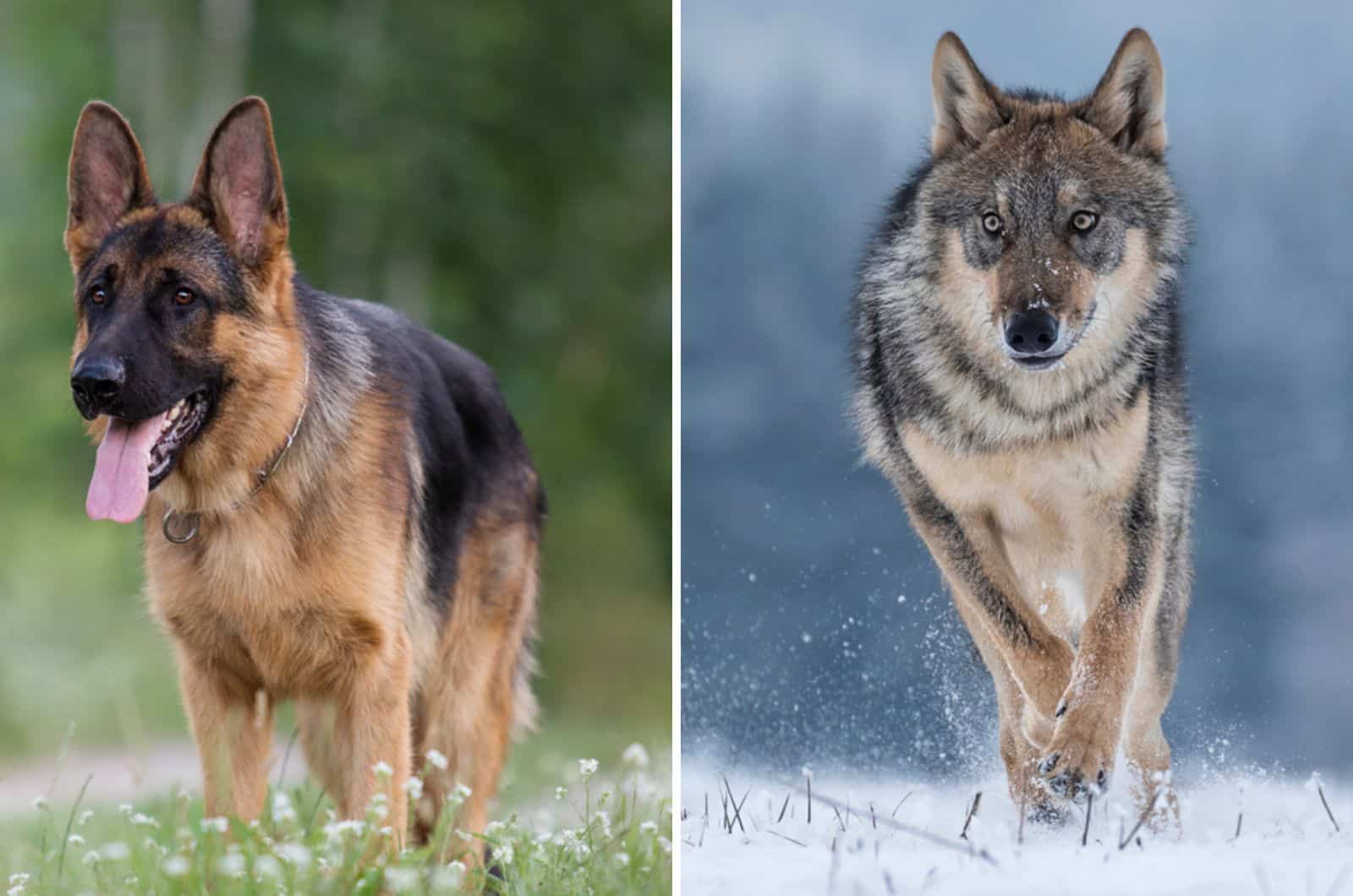The German Shepherd vs Wolf discussion took place not so long ago. The main idea behind this debate was rooted in the fact that both wolves and GSDs share a good part of their physique, intelligence, and intuition.
Still, these two are pretty easy to distinguish as GSDs, unlike wolves, are much smaller, they typically have a broader span of coat colors, they are highly trainable, and they are easily socialized.
Here are some other basic differences between GSDs and wolves…
German Shepherd Vs Wolf: Comparison
[table id=736 /]
As we can see from the chart above, a full-blooded German Shepherd dog is far smaller than a typical gray wolf. At the same time, wolves are generally faster and more vigilant than GSD puppies, which makes them hardly traceable.
On the other hand, a domesticated dog’s stamina highly depends on the training routine.
While gray wolves are generally pack animals that don’t get along with any other species – GSD canines are highly affectionate and easily adapted to all sorts of environments.
Even though these purebred dogs can be aggressive towards unknown people, they are generally well-behaved and easily maintained.
German Shepherd Vs Wolf: Physical Appearance
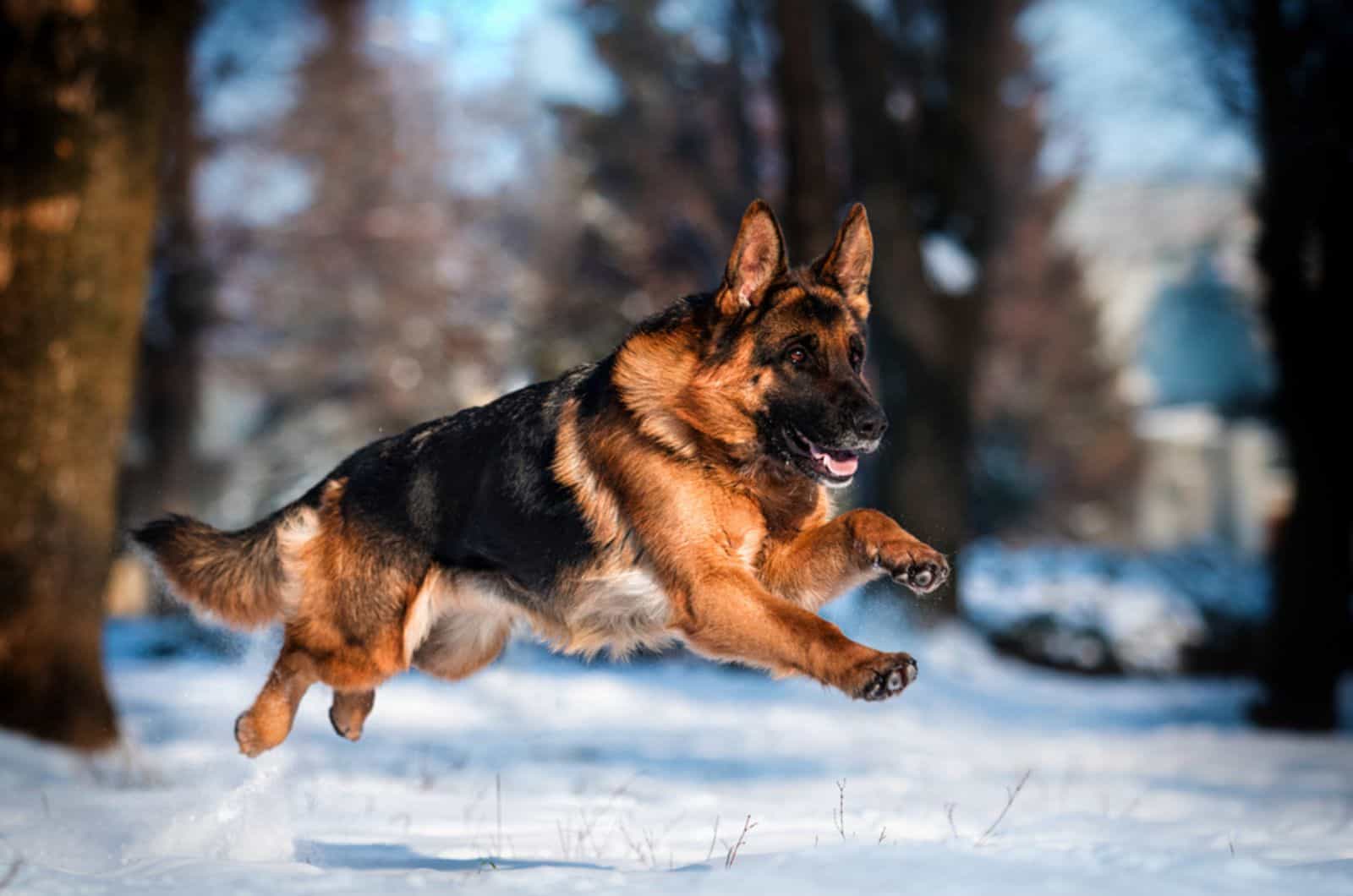
GSD
Both male and female GSD puppies are considered to be a medium to large breed that stands between 22 and 26 inches in height. On the other hand, female GSDs weigh around 50 to 70 pounds, while males weigh between 65 and 90 pounds on average.
GSDs have erect ears, a long, black snout, a bushy tail, and a muscular back. Typically, the GS breed of dog has brown eyes. These AKC-recognized canines have a medium long, thick coat that sheds moderately.
The German Shepherd breed is generally athletic, strong, and has great stamina. These canines require at least one to two hours of high-intensity exercise during the day.
Wolf
Unlike wolf-like breeds, pure wolves, known as Canis Lupus, are generally much stronger, and they have a greater bite force, which is around 400 psi (pounds of pressure per square inch).
These wild animals, unlike wolfdogs or other wolf mix descendants with some wolf DNA in their bloodline, are hardly socialized and domesticated.
Generally, wolves are around 80 to 100 pounds heavy. They are between 29 and 30 inches tall at the shoulders, which makes them significantly taller than their GSD counterparts.
An average wolf can easily reach up to 14 years of life in the wilderness, while captivated ones can reach up to 16 years.
These wild canines have a thick, medium-long double coat that comes in gray and brown color patterns mostly.
Unlike GSDs, wolves require a lot more activity during the day as they are used to constant movement. An average wolf has at least four hours of high-intensity exercise during the day, which is more than double what a GSD puppy requires.
German Shepherd VS Wolf: Dieting
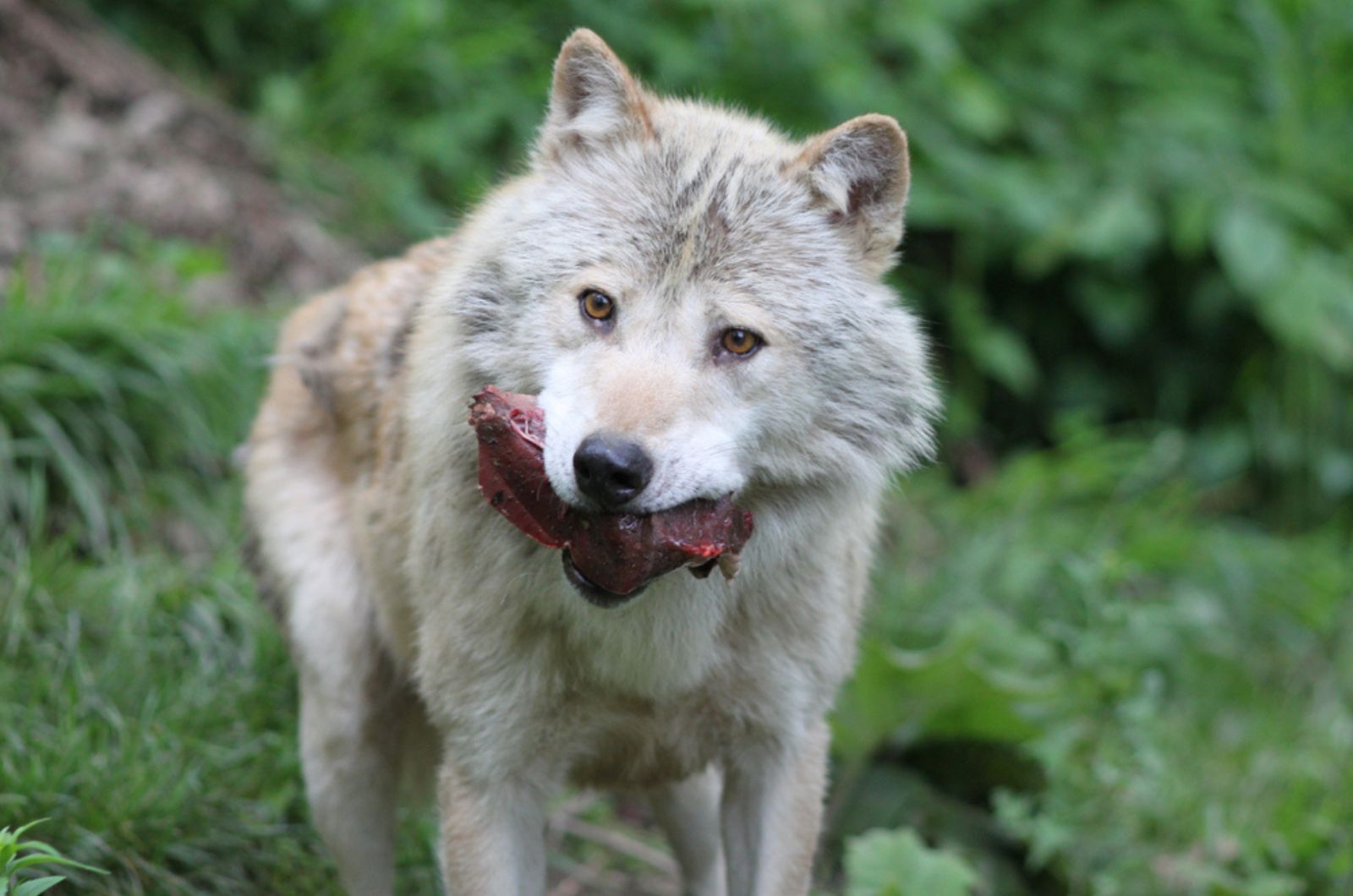
GSD
German Shepherd puppies, just like Kangals, Pitbulls, and Mastiffs, can do just fine on a raw diet. However, the feeding chart of these canines has to be strict and to the point as GSDs get easily overweight.
As GSDs are omnivores, they can eat both plant-based and meat-based food. That said, the best way to feed your GSD is if you make the perfect balance between green vegetables enriched with fibers, and protein-based foods.
You may want to stay away from poor-quality dog food brands as GSDs are prone to stomach torsion and digestive problems. On the other hand, giving your dog table scraps and junk food is not the smartest option either.
Alongside their dieting, GSDs need to have a quality exercise routine every day. Puppies that don’t have a proper amount of exercise on a daily basis are more prone to obesity, diabetes, heart problems, and bloat.
Wolf
Just like their Coyote counterparts, both female and male wolves are carnivores. That said, these wild animals eat deer, elf, moose, bison, and even beaver meat.
On the other hand, captivated wolves can be fed with the same GSD raw diet. Furthermore, these large canines can live on dry kibble, chicken or turkey meat, or fish.
As they are also prone to various digestive problems, giving them a proper amount of vegetables combined with their regular meat portion is generally a good idea.
Captivated wolves are generally a bad idea as these large canines do perfectly fine on their own. Wolves in captivation are generally unable to exercise as much as required, and they tend to gain weight quite easily.
Socialization
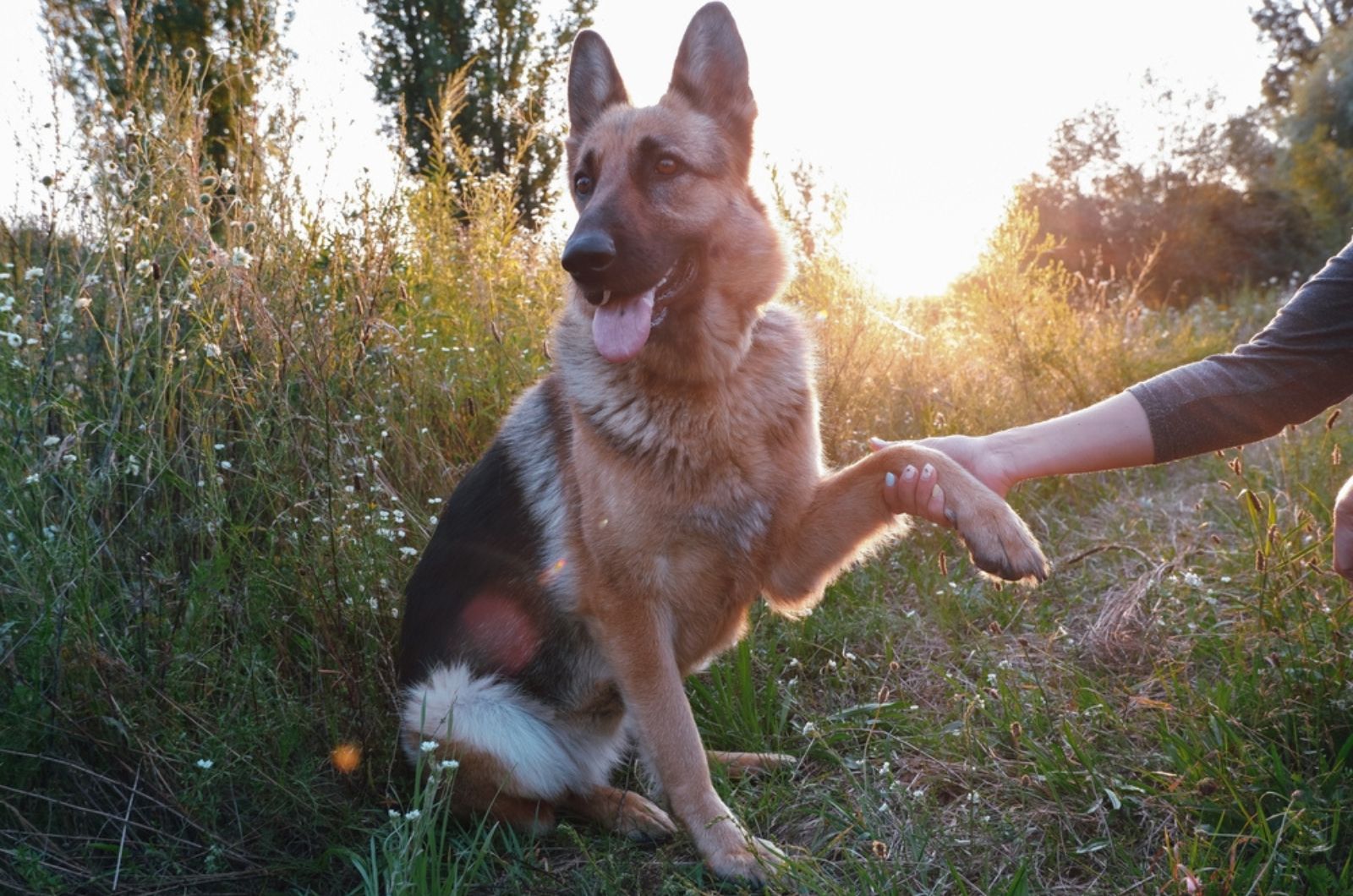
GSD
Even though some GSDs are actually not a good idea for novice owners, the majority of these popular dogs are easily adaptable dogs that do great around all types of families. Still, the German Shepherd dog requires a certain amount of socialization in its young age.
That said, puppies that are subjected to early socialization are generally seeking human interaction more than their unsocialized counterparts. This is a highly social breed that loves spending time with their owner.
On the contrary, GSDs that are not given the chance to live next to their owner usually suffer from severe separation anxiety. Puppies suffering from this condition are self-destructive, frustrated, and even aggressive.
Wolf
Many people don’t understand wolf behavior, which is the main problem in the wolf-human relationship. These wild animals don’t do well around humans, nor around any other species, except their pack-mates.
Wolves are pack animals that don’t spend much time outside their family. Domesticating these large canines is generally hard, and not recommended, as wolves have a low level of natural socialization.
However, some studies show that wolves can develop a certain amount of feelings towards humans who provide food for them. Even so, these animals are not to be trusted as they are just not naturally affectionate.
Admiring a wolf from a distance is the best that you or your family members can do.
Aggressiveness
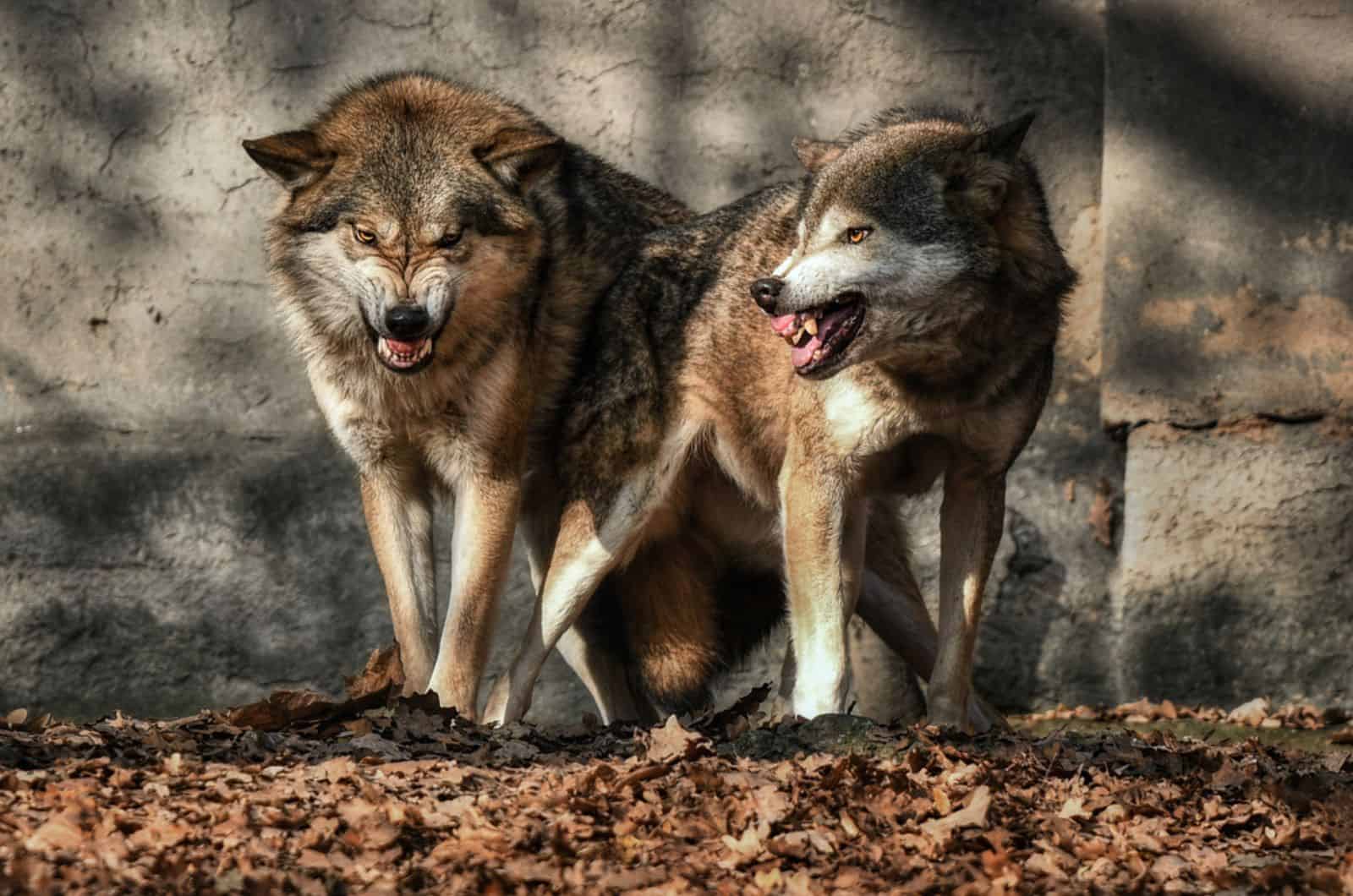
GSD
If you’re wondering ‘‘who would win in a fight between a wolf and my German Shepherd,’’ the answer may disappoint you. That’s right… wolves are much stronger and much more aggressive animals than GSDs!
Despite being a naturally aggressive breed, GSDs are not as good of guard dogs as they are working dogs or watchdogs.
This fearless dog breed uses its aggression for self-defense and for defending their loved ones against enemies and predators, but the truth is that GSDs are not as strong as some other large breeds.
Puppies purchased from reliable breeders are highly unlikely to be aggressive as they undergo the process of early socialization. In some rare cases, GSDs that suffer from some sort of trauma or separation anxiety can display aggression towards their owner.
Wolf
Generally, wolves are dangerous to humans, especially those affected with rabies. People who put themselves close to these wild canines risk serious injuries as wolves are naturally dangerous, unfriendly, and they react by their instincts.
These large canines don’t perceive humans as prey, but they attack out of fear. Wolves are extremely shy animals that don’t even look humans in their eyes. However, once they feel endangered – they will attack to protect themselves.
On the other hand, rabies-affected wolves are highly likely to attack regardless of the distance or fear.
German Shepherd VS Wolf: Domestication
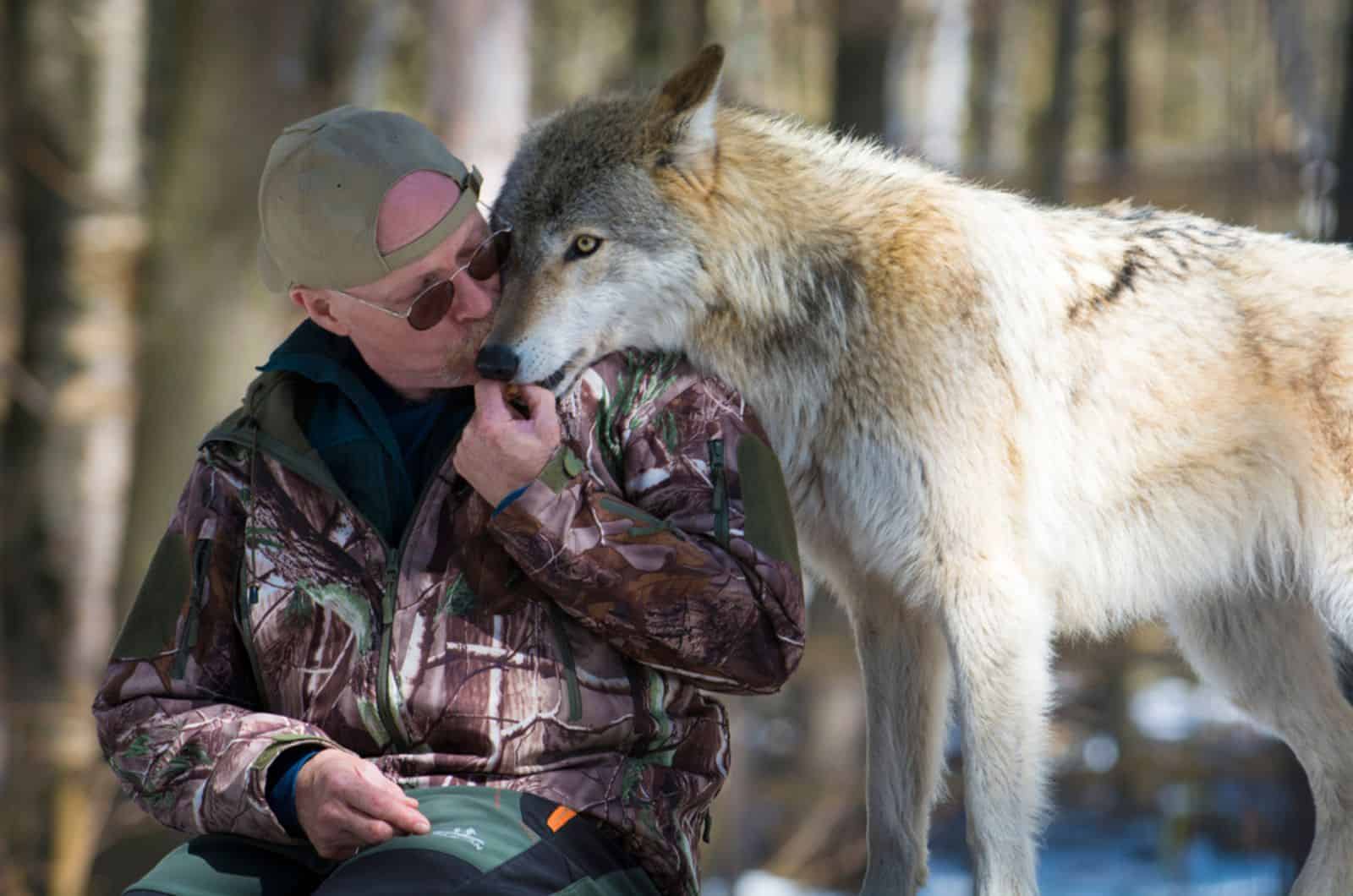
GSD
While GSDs are considered to be among the best family breeds in the world according to dog lovers, they don’t do great outside the house. These medium to large canines love spending their time indoors as long as they get a proper amount of exercise outside.
Due to their high level of affection and dependence, GSDs easily develop separation anxiety. These canines are generally clingy, which is why they don’t do well when separated from their loved ones.
On the other hand, the downside of having a GSD in a house is the fact that these pooches shed moderately to excessively.
Wolf
On the other hand, we can speak about the certain amount of coevolution of wolves and humans as long as we don’t say that this is a common wolf behavior. Quite the contrary – wolves are generally shy and dissocial animals that don’t do well around humans.
They rather prefer being in a pack where they can move, mate, and act freely. These wild animals are not recommended for having as home pets, neither indoors nor outdoors.
Even experienced breeders and dog trainers have a hard time domesticating a pure wolf.
Who Wins?
If you’re wondering who wins the German Shepherd vs Wolf battle in terms of socialization and housing, the answer is – the GSD puppy!
The fact that they belong to a dog group of pets makes them win right in the start. GSDs are friendly, social, loyal, and eager to please their owner, which is far opposite from the wolf character.
However, wolves win in terms of physical performance, agility, stamina, and bite force. Wolves are far stronger than GSDs, which is why these two should never be put in a fight.
Read more: East European Shepherd Vs German Shepherd: Who Wins?
